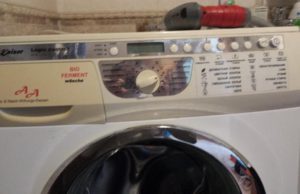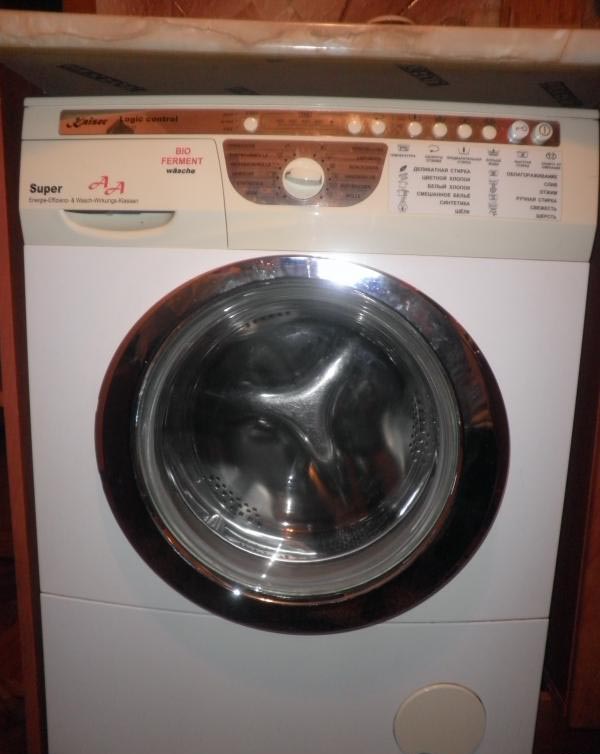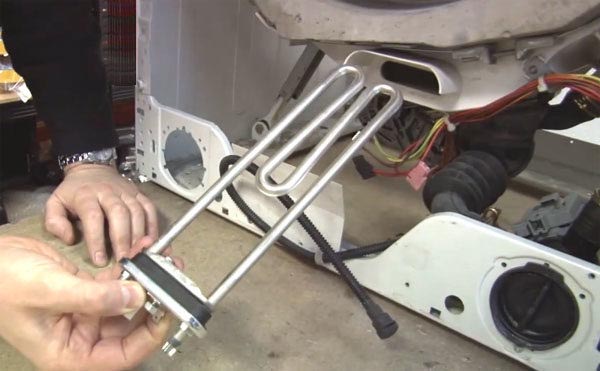 Such machines have built-in diagnostic systems that provide the ability to check each operating mode of the unit. They identify certain defects, which facilitates and speeds up repair work. Repairing a Kaiser washing machine is very similar to troubleshooting machines from other companies, but there are still some fundamental differences. And they manifest themselves primarily in the most common malfunctions.
Such machines have built-in diagnostic systems that provide the ability to check each operating mode of the unit. They identify certain defects, which facilitates and speeds up repair work. Repairing a Kaiser washing machine is very similar to troubleshooting machines from other companies, but there are still some fundamental differences. And they manifest themselves primarily in the most common malfunctions.
Basic malfunctions of the Kaiser washing machine
If we compare the statistics of service workshops, we can conclude that the Kaiser machine has a certain number of weak points where failures strike first. As a rule, the following parts fail in such a machine:

- The water heating element is a problem for every model. Sometimes it occurs due to a factory defect or design features of the machine, but in most cases the cause is external factors, which include water hardness and scale formation, voltage drops, low-quality powders;
- a problem in the waste water drainage system is also typical for any machine, but in washing machines of this brand it is considered quite common;
- Another drawback is frequent water leaks.Hoses and pipes fail quite quickly for many models, but Kaiser is in the leading position among them.
In addition, the consumer may encounter such troubles as a not tightly closed hatch, failures in the control board, breakdown of the electric motor, or slipping of the drive belt. But such failures are rare and should not be considered typical.
DIY repair
With certain skills, you can repair a washing machine yourself.
- Heating element failure.

The machine is equipped with a heating element of standard sizes. To change it, you need to perform certain actions:
- disconnect the washing machine from the mains;
- disconnect the water supply and the outlet to the sewer;
- turn the machine towards you with the back wall;
- Unscrew the four bolts holding the panel and remove it;
- Below the tank there will be two contacts with wires. This is the tail part of the heater;
- The heating element is checked by a tester. In working condition, it should show 24 - 26 Ohms;
- if the resistance value is different, it is necessary to disconnect the wiring of the heater and temperature sensor, unscrew the fastening nut;
- The heating element is carefully removed along with the rubber gasket. This will require some effort, because the heating element will be difficult to give in. Slowly rocking him, they carefully pull him towards him;
- a new analogue is checked by a tester;
- it is installed in the mounting groove, the wiring is supplied and connected;
- the back wall is installed in its place and screwed;
- Now you can test the machine, having previously connected it to the necessary systems.
- Leaks.
If a large puddle appears on the floor during or after washing, it means that somewhere the water has found a “path”.Before you start looking for the problem, it is recommended to protect your and your neighbors' homes from flooding. To do this, turn off the water supply, put more rags under the machine body, open the hatch located on the front panel at the bottom right, and unscrew the filter.

When the remaining water has poured out, you can start looking for a leak. First, check the hoses, since this is the simplest event. You will have to inspect the water intake and drain hoses. If the problem is in one of them, replacement is easy.
Another place is the pipes. To identify an internal leak, you will have to disassemble almost the entire machine. The work is not very simple, it is better to seek help from an experienced technician. An internal leak can be caused by the pump, pipes, door cuff, dust filter seal, emergency drain hose plug, inlet valve, tank.
- There is a problem with water intake and drainage.
Such failures can occur in certain situations:
- the pump responsible for draining waste water has broken down;
- the drainage system is clogged;
- the water in the water pipes is of poor quality;
- the flow filter of the water inlet valve is clogged.

We should not exclude trivial cases when the owner simply forgot to open the water supply tap, or when it was turned off. The situations are stupid, but they happen from time to time. If the washing machine freezes, and the error code E 02 appears on its screen, then you must immediately check the water inlet hose, then inspect the electromagnetic inlet valve. When your machine gives an E 03 signal, you should check the drain pump. It will probably require a complete replacement or a regular cleaning - the inspection result will show everything.
Determine the breakdown in the Kaiser washing machine yourself
Models of washing machines with a display are equipped with an error display function when certain malfunctions and operational failures occur. Sometimes, knowing what a particular error code means, the owner can fix the problem with his own hands, without calling a specialist from the service center.
In most cases, the following error codes are displayed:
- E 01 - indicates that there is no hatch closing signal coming from the lock limit switch. Either it is damaged or the door is not closed;
- E 03, T 95, T 30 - these signals indicate that the waste water drain filter or the hose itself is clogged;
- E 02, T 95, T 0, T 60 - such codes indicate problematic issues related to water pressure or clogging of the water intake hose, filter, inlet solenoid valve;
- E 04 - the sensor responsible for the water level signals that the washing machine tank is full. Perhaps the inlet valve was blocked in the open position, or during the washing process the pressure in the water pipes increased, or the sensor or electrical controller failed;
- E 05 – the sensor did not produce the “Nominal water level” signal. Poor pressure in the network or lack of water, failure of the solenoid valve or level sensor, failure of the electrical controller;
- E 06 - there was no signal from the drain pump that all waste water had left the tank. This means that there are problems with the pump or sensor, the drain hose or filter is clogged, the reset valve is blocked in the “on” position;
- E 07, T 95, T 60, T 40 - such errors indicate water leaks;
- E 08 - the supply network does not provide the necessary parameters. This may be due to voltage fluctuations;
- E 11 – hatch lock relay failure. The problem must be found in the electronic controller;
- E 21 - there is no signal from the tachogenerator that the drive motor is rotating.The motor itself and its contacts are checked;
- E 22 - the engine rotates without a start command. There may be problems with the electrical controller or the laundry in the machine drum is unevenly distributed;
- E 31 – a short circuit has occurred on the temperature sensor. This item needs to be checked. It may need to be replaced;
- E 32 – there was a break in the electrical circuit of the temperature sensor;
- E 42 - the laundry program has ended, but the door remains locked for more than two minutes. You should look for a problem in the electronic controller or door lock.
As soon as any of the error codes are displayed, the washing machine door will lock automatically. The lock can be removed only after the cause of the failure has been eliminated, or the machine is de-energized from the electrical network. After the power is turned off, the machine stores data about the last error signal. To reset it in memory by turning on the unit, you must press and hold the “Start” button for at least three seconds.
Conclusion
If you have problems with the bearings or seals of the machine, you need to repair or completely replace the unit responsible for controlling the process; it is not recommended to take risks yourself. In such situations, it is best to invite an experienced master.









